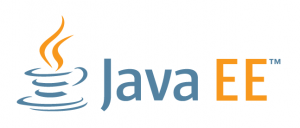Introduction to Java EE
Java EE (Enterprise Edition) is a powerful platform for developing enterprise-scale applications. In this tutorial, we’ll walk you through the basics of Java EE, its key components, and how to get started building applications using this platform.
Prerequisites
Before diving into Java EE, you should have a basic understanding of Java programming language and object-oriented programming concepts.
Key Concepts
1. Servlets
Servlets are Java classes that handle HTTP requests and generate responses. They are the foundation of Java EE web applications.
import javax.servlet.*;
import javax.servlet.http.*;
import java.io.*;
public class HelloWorldServlet extends HttpServlet {
public void doGet(HttpServletRequest request, HttpServletResponse response)
throws ServletException, IOException {
response.setContentType("text/html");
PrintWriter out = response.getWriter();
out.println("<html><body>");
out.println("<h1>Hello, World!</h1>");
out.println("</body></html>");
}
}2. JavaServer Pages (JSP)
JSP allows you to create dynamic web content using Java code embedded in HTML pages.
<%@ page language="java" contentType="text/html; charset=UTF-8" pageEncoding="UTF-8"%>
<!DOCTYPE html>
<html>
<head>
<title>Hello World JSP</title>
</head>
<body>
<h1>Hello, <%= "World" %>!</h1>
</body>
</html>3. Enterprise JavaBeans (EJB)
EJB provides a standardized architecture for building distributed, transactional, and scalable enterprise applications.
import javax.ejb.*;
@Stateless
public class HelloWorldBean {
public String sayHello() {
return "Hello, World!";
}
}Setting Up Your Development Environment
To start developing Java EE applications, you’ll need to set up your development environment. Follow these steps:
- Download and install a Java EE-compliant application server like Apache TomEE or GlassFish.
- Set up your IDE (Integrated Development Environment) such as Eclipse, IntelliJ IDEA, or NetBeans with Java EE support.
- Create a new Java EE project in your IDE.
Creating Your First Java EE Application
Let’s create a simple “Hello World” web application using Servlets and JSP:
- Create a new Servlet class (
HelloWorldServlet.java) and implement thedoGetmethod to generate a basic HTML response. - Create a new JSP file (
hello.jsp) and write HTML markup along with embedded Java code to display “Hello, World!”. - Deploy your application to the application server and access it through a web browser.
Conclusion
Congratulations! You’ve now taken your first steps into the world of Java EE. In this tutorial, we covered the basics of Java EE and built a simple web application using Servlets and JSP. Stay tuned for more advanced topics and explore the vast capabilities of Java EE for enterprise development.


